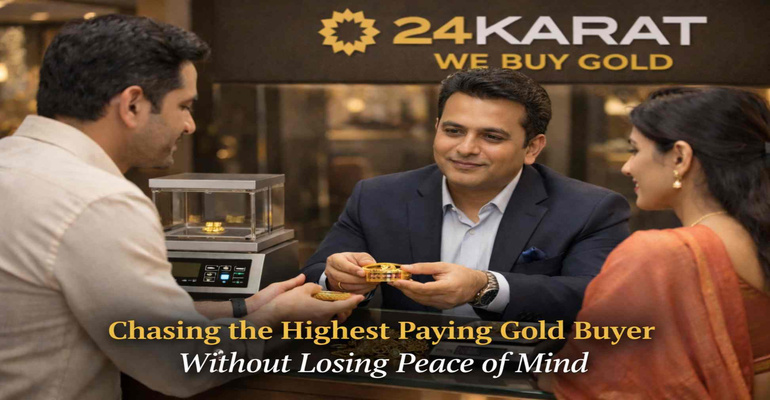Understanding Silver Varieties: A Comprehensive Guide for Your Next Purchase
-(1).png)
When considering a silver jewelry purchase, numerous questions may arise: What type of silver is the best to buy? Does silver tarnish? What kind of silver is worth the most? Understanding the differences among various types of silver is crucial for making an informed decision. This guide will explore the pros and cons of several well-known silver varieties used in jewelry, helping you select the right type for your needs.
Types of Silver Alloys
Fine Silver: The Purest Form
Fine silver, with its 99.9% silver content, is the most unadulterated form of silver. Renowned for hypoallergenic, fine silver boasts better tarnish resistance than other silver types.
However, its purity renders it softer and more susceptible to damage, so it's less commonly used for everyday jewelry. The allure of fine silver lies in its lustrous sheen and high silver content, making it an exquisite choice for unique pieces rather than daily wear.
Also You can Read :- The Auspiciousness of Gifting and Buying Gold: Navigating Festive Traditions
Sterling Silver: The Popular Choice
Sterling silver, an alloy containing 92.5% silver and 7.5% copper, is a prevalent choice in jewelry making. Its blend offers a perfect harmony of durability and aesthetic appeal, balancing pure silver's softness with copper's strength.
While slightly more prone to tarnishing, this mix is celebrated for its affordability and hypoallergenic nature. Sterling silver's versatility and luster have made it a staple in high fashion and casual jewelry, striking an ideal balance between quality and cost-effectiveness.
Non-Tarnish Silver: Enhanced Durability
Non-tarnish silver alloys, such as Argentium, stand out for their superior resistance to tarnishing. These innovative alloys result from replacing part of the traditional copper in sterling silver with germanium and other metals.
This composition enhances their durability and slightly elevates their price point. Non-tarnish silver is a practical choice for those who prefer a low-maintenance silver that retains its shine over time, making it an increasingly popular choice in modern jewelry design.
Also, You Can Read:- The Gold Rush: Decoding the Best Ways to Capitalise on Your Assets in India
Britannia Silver: A Softer Alternative
Britannia silver, composed of at least 95.83% silver, is a softer alternative to the more widely used sterling silver.
This high level of purity results in a more malleable material, which is less prevalent in the U.S. but still valued by particular jewelers for its rich silver content. The allure of Britannia silver lies in its lustrous appearance and historical significance, making it a cherished choice for unique and artisanal jewelry pieces.
Coin Silver: Historical Durability
Historically crafted from melted U.S. coins, coin silver comprises 90% silver and 10% copper. This durable alloy was once a common material for silver coins and had a sturdier composition than sterling silver.
However, its higher copper content makes it more prone to tarnish. Today, coin silver is less common, but it holds historical value and is sought after by collectors and enthusiasts who appreciate its unique origin and robustness.
Also You Can Read :- Gold and Its Evergreen Significance in the Indian Market
European Silver: Continental Variety
European, or continental silver, encompasses a range of non-sterling silver grades traditionally used across Europe. Each type of European silver alloy possesses distinct properties and quality marks, reflecting the diverse silver crafting traditions of the continent.
These silver varieties are treasured for their regional uniqueness and historical significance, offering a glimpse into the rich tapestry of European craftsmanship and heritage in silverwork.
Types of Silver Coatings
Silver-Filled: Durable and Affordable
Silver-filled coatings offer a durable and cost-effective solution for those seeking the elegance of silver without the high price tag. This type involves bonding a substantial layer of silver, typically 5-10%, to a base metal like brass.
The resulting material combines silver's beauty with the base metal's strength, making it ideal for jewelry that lasts. With proper care, silver-filled items maintain their luster over time, making them a popular choice for both everyday wear and special occasions.
Silver Plated: Economical and Stylish
Silver-plated jewelry presents an economical option for those who love the look of silver. In this process, a thin layer of silver is electroplated over a less expensive base metal, offering the appearance of solid silver at a fraction of the cost.
While silver-plated items are stylish and accessible, the thin coating is prone to wear and tear, revealing the underlying metal over time. It's perfect for trend-driven pieces and those looking to enjoy silver's aesthetic on a budget.
Also You Can Read :- Gold Jewellery Retailers Revenue To Increase 23-25 Percentage
Types of Fake Silver
Tibetan Silver: A Misnomer
Despite its alluring name, Tibetan silver is a misnomer as it contains no real silver. Instead, it is a composite of various base metals, often crafted to emulate a vintage silver look. Its popularity lies in its ability to capture intricate designs and patterns at an affordable price.
However, buyers should be aware of its non-silver composition and potential inclusion of less desirable metals, making it a choice more for its aesthetic than its value.
Tribal Silver: Cultural Representation
Tribal silver, akin to Tibetan silver, is a term used for a range of non-silver metal alloys used in jewelry showcasing various cultural designs. It is valued for its ability to reflect traditional and ethnic motifs, offering a unique and culturally rich alternative to authentic silver.
However, like Tibetan silver, it does not contain actual silver, making it a budget-friendly option for those interested in pieces representing different cultural heritages.
Nickel Silver: Versatile and Allergy-Prone
Nickel silver, also known as German silver, contains no silver. It comprises composite alloy made primarily of copper, nickel, and zinc, offering a silver-like appearance.
Also You Can Read :- Jewellery With 6-Digit HUID Number To Be Sold - Find All The Details Here
While it's versatile and affordable for fashion jewelry, its high nickel content can trigger allergic reactions in some individuals. Its durability and cost-effectiveness make it a popular choice in the fashion industry, particularly for statement and costume pieces that require a silver finish without the high cost.
Your Guide to Selecting the Perfect Silver Jewelry
Navigating the silver jewelry world can be exciting and overwhelming. If you search for "how many types of silver are there," you will come across various options.
Thus, understanding what kind of silver is worth the most or which type of silver is the best to buy becomes crucial. This guide simplifies your decision-making process, ensuring you find silver jewelry that appeals to your style and suits your lifestyle needs.
Deciphering Silver Quality: What's in a Mark?
When determining the best quality silver for jewelry, it's essential to understand the various hallmarking standards. Quality marks like "925" on sterling silver indicate the purity of the silver.
These markings are your assurance of the silver's authenticity and value. Knowing these details helps make an informed choice, especially when considering investment pieces or heirloom-quality jewelry.
Everyday Elegance: Choosing the Right Silver for Daily Wear
For those wondering which silver is best for jewelry in daily use, durability is critical. Sterling silver is ideal for everyday wear with its balance of purity and strength. It withstands regular use while maintaining its luster, making it perfect for wedding bands, simple earrings, or a go-to necklace.
On the other hand, fine silver, being softer, suits better for occasional wear or statement pieces.
Also you can Read :- Selling Silver For Cash Is No More Complicated Know How
Investing in Silver: Long-Term Considerations
For investors pondering, "Will gold become cheap in the future?" silver presents an attractive alternative. While the future prices of precious metals can be unpredictable, silver has historically held its value well.
It's a tangible asset that diversifies investment portfolios and offers a hedge against inflation. Understanding the market trends and silver's position can be pivotal in deciding when and what type to invest in.
Unveiling the Varieties: Exploring Different Types of Silver
There's a fascinating array of silver types beyond the well-known sterling and fine silver. Each type, from non-tarnish varieties to unique alloys like Britannia silver, offers specific advantages. Exploring these varieties helps you find pieces that resonate with your taste and meet your practical requirements.
Also You Can Read:- The Golden Affair: Everything You Need to Know About Gold
Conclusion: Making Silver Work for You
Consider your lifestyle, usage, and personal style to find the perfect silver jewelry. Whether it's the allure of fine silver for special occasions or the practicality of sterling silver for daily wear, each type brings its unique charm. And for those looking to make informed investment choices, understanding the market dynamics of silver is crucial.
At24Karat, we understand the importance of making the right choice in precious metals. Our experts are here to guide you through our extensive collection, helping you find the perfect match for your needs, be it for adornment, investment, or gifting. Visit us to explore a world of high-quality silver and gold jewelry tailored to your preferences.













Leave A Comments